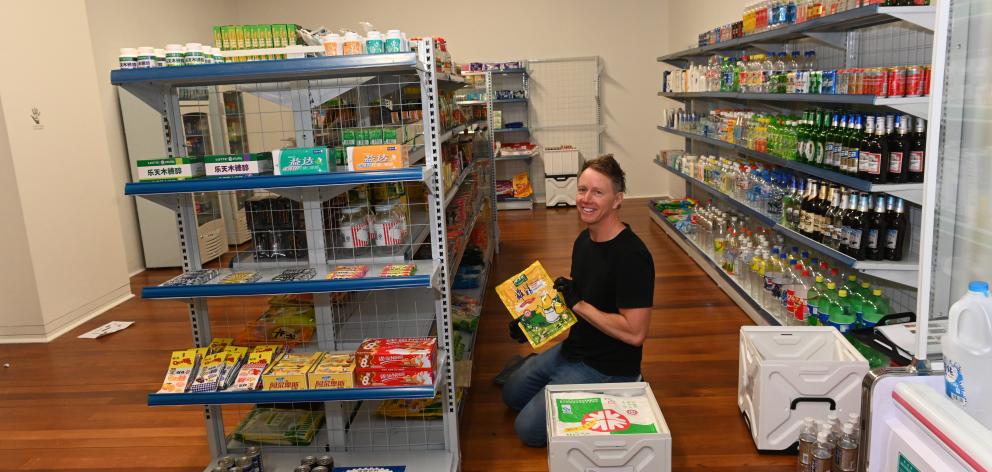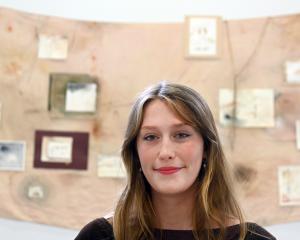
An installation manual for Chinese artist He Xiangyu’s Tank Project says it will take 10 people seven days to install.
Another work by Xu Zhen involves re-creating a mini-mart complete with thousands of "grocery" products placed on shelves.
These are just some of the challenges the Dunedin Public Art Gallery’s "New Networks: Contemporary Chinese Art" exhibition is generating for its staff.
For curators Lucy Hammonds and Lauren Gutsell, it is an exciting time as they bring the works to Dunedin that have not previously been seen in New Zealand. "Contemporary Chinese art has risen with great force into the global contemporary art discourse recently," Gutsell says.
University of Waikato’s Dr Maria Galikowski, a scholar of Chinese visual arts and culture, says the Chinese art scene is vibrant and its contemporary art is "hot" on the international market, making some artists very wealthy.
"A lot of contemporary art deals with issues that have arisen as a result of China’s massive economic and social transformation during the last four decades involving physical displacement of individuals and communities and a move from guaranteed livelihoods under the central planning system to uncertainties and anxieties regarding the new capitalist, consumerist environment."
The calibre of artists being exhibited by DPAG and the prominent roles they play in the contemporary art scene represents a wonderful opportunity for New Zealanders to witness and experience "cutting-edge" art from a country undergoing a massive process of transition, Dr Galikowski says.

The curators wanted to not provide a history of Chinese contemporary art, but more of an introduction to the movement, which began at the end of the Chinese Cultural Revolution.
"We were fairly mindful of the vast story presented by one country’s recent art history," Hammonds says.
Up until the late 1970s Chinese artists had to produce works that conformed to Soviet-inspired socialist realism.
Dr Galikowski says they were expected to convey the official policies of the day.
"The only acceptable styles were essentially traditional Chinese ink painting and for oil painting, realism."
Since that time, China has undergone economic reform and the cultural sphere has become more liberal, she says.
"Artists are permitted to experiment with all sorts of new styles and content as long as it doesn’t touch on sensitive political questions, disturb public order or offend public decency."

Some of this work has been brought into collections through artists coming to New Zealand or Australia for residences, such as the one which brought Yang Yongliang to Dunedin Public Art Gallery this year.
Others have been collected through curatorial programmes, such as the Asia Pacific Triennial of Contemporary Art in Brisbane.
The early 1990s was pivotal to the movement as artists began leaving their country to establish studios around the world and galleries began inviting artists to exhibit, Gutsell said.That was when the Triennial was established and began exhibiting art from the Asia Pacific region.
The White Rabbit was also pivotal in exposing Australian audiences to Chinese contemporary art.

"It has been very influential and is a destination for many," Gutsell says.
"She [founder Judith Neilson] is very active and reactive to what is happening in China and makes numerous purchasing trips to China."
Having selected the works, the curators can see themes — scale, technology and a reference to China’s history.
"Many of the works are literally large and labour intensive and speak to the country’s manufacturing capacity to realise," Hammonds says.
"And there is a strong thread of artists using techniques or traditions of the past reactivating or reconfiguring their relationship in the contemporary moment."
Xiangyu’s deflated replica of a Soviet T34 tank made of Italian leather took 35 workers two years to make and used 250 hides and 50km of string. While the artist maintains a neutral political stance, the work reflects China’s complex transition to a capitalist society.
Liu Jianhua’s Container Series reflects Chinese ceramic history. He has recreated traditional ritual vessels and added contemporary shapes in varying sizes, using a celadon and red glaze to emulate the greenwares of the Song Dynasty (960-1279) in the 37-piece installation, which is randomly arranged.
Similarly, Wang Qingsong’s 120cm by 960cm Night revels of Lao Li uses the traditional Chinese figure painting Night Revels of Han Xizai to portray the situation of contemporary Chinese.
The curators also wanted to ensure Chinese women artists of the period were emphasised, such as sculpture and installation artist Yin Xiuzhen, whose aluminum and mild steel work Model for the Black Hole will be exhibited. Interestingly, she is married to Song, whose black-and-white photographs A Pot of Boiling Water are also in the exhibition.
Overall, the curators believe the exhibition will be a "revelation" to people.
"These are highly complex art works, very sophisticated and conceptually rigorous," Hammonds says.
"It will pull people out of any preconceptions."
Dr Galikowski says the exhibition will enable New Zealanders to better understand the dynamics in contemporary Chinese society and culture.
"As the New Zealand-China relationship develops, it is important that, along with our economic/trade, we nurture those sort of cultural connections that more meaningfully bind together peoples and communities at a deeper level."
It is hoped the exhibition will also provide context to DPAG’s other summer exhibition by Yang Yongliang, which opens at the same time.
To see
"New Networks: Contemporary Chinese Art", Dunedin Public Art Gallery, December 8 to April 28.














